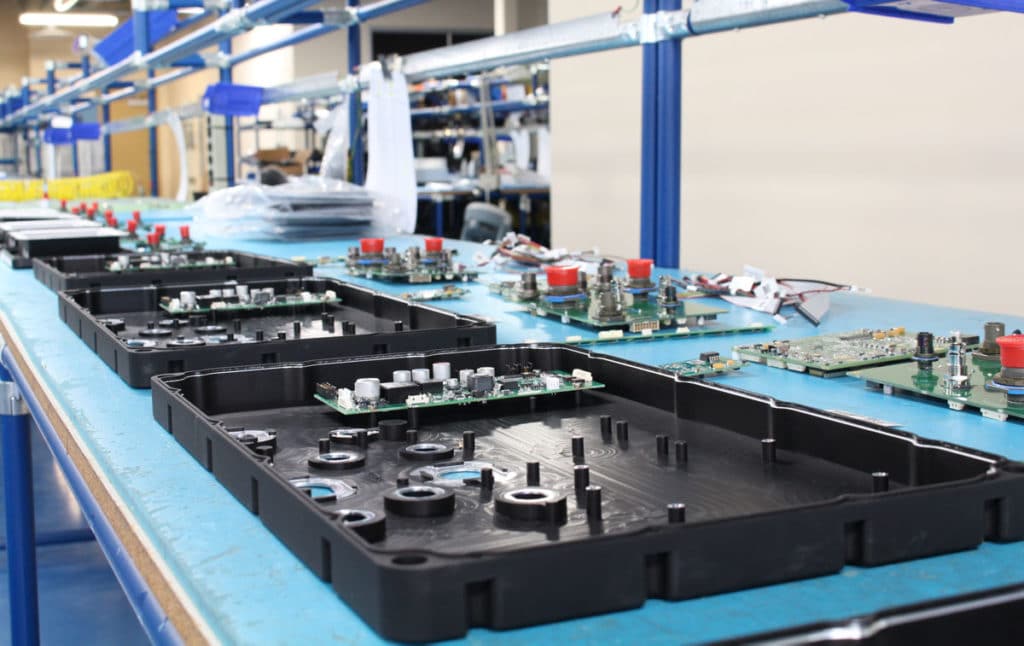
Behind the Build: Advanced Sealing Techniques to Protect Rugged Electronics
To survive the rugged environments typically found in the aerospace and defense, oil and gas, mining and agriculture industries, electronic devices must be designed to prohibit the ingress of water, dust, chemicals and other foreign debris. At any moment a device could be submerged in water aboard an amphibious vehicle, exposed to freezing temperatures in the arctic or even exposed to dust and dirt on an underground mining truck. The sealing techniques that ensure these electronics continue functioning in each extreme environment require experience, testing and a thoughtful approach.
It’s a well-known fact; electronics and water don’t play nicely with one another. And neither does dust. To ensure that rugged electronics are up for the task, we turn to the International Electrotechnical Commission for the standards that govern these specifications. According to the IEC standard 60529, items shall qualify to certain test criteria to be classified to a particular Ingress Protection Code, or IP rating. The general industry consensus is that a product must meet the IP67 rating which mandates the product is “dust-tight” for solid particle protection and impervious to water immersion of one meter for 30 minutes. This challenging test imposes inward pressure of 9.81 kPa and a test failure is realized when any amount of water enters the product’s cavity.
Now, let’s consider the size of a water molecule. While there isn’t a fixed diameter, a water molecule measures approximately 0.27 nanometers in width. If you could line water molecules up end-to-end, it would take nearly 350,000 molecules to equal the width of an average human hair. Considering the minuscule size of a water molecule, it’s not difficult to understand how critical attention to a product’s design and assembly is when developing fully-sealed electronics. Water and dust entry points are numerous, and several containment solutions can be applied to ensure in-field reliability.
Enclosure
The beauty of using an aluminum enclosure (beyond its durability as covered in our most recent Behind the Build post) is the advancement and precision of a CNC machine. CAD modeling and analysis allow for the milling of metal components to be highly accurate and consistent. Unique abilities of a five-axis CNC machine permit complex joinery, recesses and channels to accommodate sealing components. Developing this foundational consistency in the enclosure is paramount for the integration of other components such as gaskets, glass, valves and connectors as operations move into serial production.
Gaskets
Throughout our daily lives we can find examples of gaskets and O-rings used to prohibit the movement of water. Rugged electronics, while not different in theory, do require more careful thought as to how dependable installation and compression are achieved. The old-fashioned technique involving vulcanized Buna-N rubber cord gaskets is not only time-consuming, but also opens the door to inconsistencies in assembly, and thereby entry points for foreign matter. An alternate method, such as robotic installation using computer-aided programs, creates an automated process infallible to human oversight. Additionally, engineering experience with torque settings and IP test results must dictate assembly instructions for repeatable compression of the gasket material being used.
Glass Adhesion
Yet again, repeatability is key. Robotic installations of chemically bonded adhesives for glass, touch screens and/or LCDs is the surefire way to avoid water entry. While each manufacturer may take a unique approach to the materials and processes used, a repeatable system is fundamental to creating reliable electronics every time.
User Interfaces
Components such as bezel keys, toggle switches and connectors all create voids in the product’s enclosure. Since many of these features are a staple in DSE product lines, such as the FHDRM, each breach must be addressed with calculated and reliable compression methods—similar to the main gasket. The selection of parts with above-par specifications is crucial to the success of the overall system.
Pressure Differentials
The creation of a fully-sealed enclosure poses potential issues when pressure differentials are imposed either through temperature or altitude variations. Specifically, a display product can be subjected to outward or inward pressure resulting in a shattered glass window if the internal gases don’t have a means for transfer. A reliable method to overcome this reality is the integration of innovative hydrophobic membrane valves. These valves allow for the transfer of air (oxygen, nitrogen and argon) but prohibit the passage of water molecules. Solutions such as this allow for products to be present at altitudes greater than 40,000 feet and operational in environments with extreme temperature changes. More information on these standards can be found in MIL-STD-810G.
Validation Testing
Regardless of manufacturing techniques, design analysis and experience garnered, there is no substitute for validation testing. Each product has distinctive characteristics like volume, surface area and interfaces that could impact its ability to keep out water and dust. A certified, in-house submersion test environment is an invaluable asset when validating new designs.
While it is unlikely electronic components aboard a land vehicle, tractor or attack helicopter will experience one meter of submersion, the spirit of the IP67 standard applies. By following these standards, electronics manufacturers demonstrate to their customers that their products are designed to reject foreign debris because in rugged environments, exposure is inevitable.
To learn more about DSE’s product designs, manufacturing techniques and validation testing, please contact our team at info@digitalsys.com.

